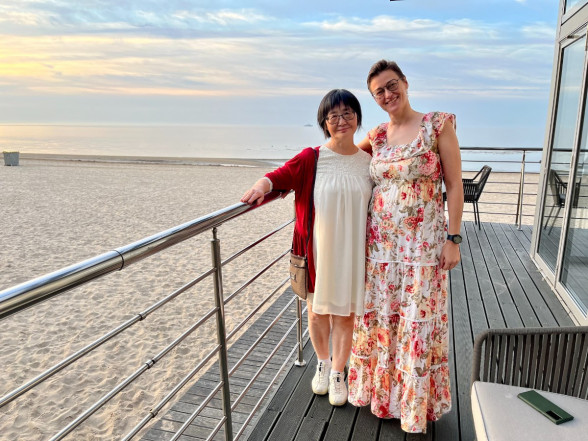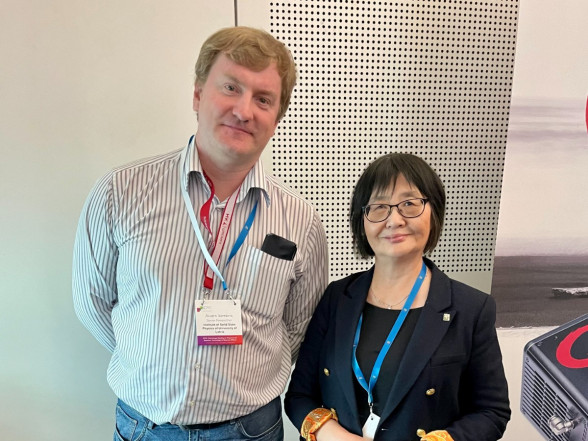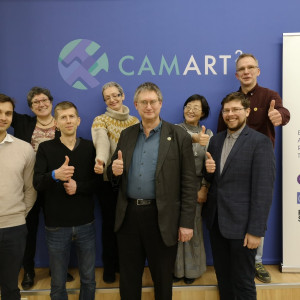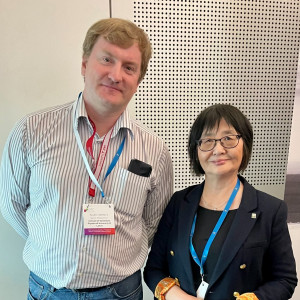Building Strong Relationships
In a world where scientific breakthroughs need to happen rapidly to solve societal challenges, collaboration between researchers from different institutes and countries is crucial. Professor Qin Wang, one of RISE’s leading experts in semiconductors, shared her experiences and insights on the importance of building relationships to foster successful interdisciplinary collaborations.
The CAMART² Project
Professor Wang has been a pivotal figure in the CAMART² project, a collaborative initiative aimed at advancing materials research and technology transfer in Europe. During a decade, she has contributed significantly as a scientist and in managing cultural changes, coordinating activities, and facilitating exchanges between scientists and students.
Consistent Communication - A Key to Success
One of the most valuable aspects of the collaboration, according to Professor Wang, has been the regular communication between the teams. "We had regular conversations, no matter how long or short," she recalls. This consistent interaction expanded the team and deeply engaged several other research groups at RISE. The project structure and inspiration drawn from Latvian scientists were highly appreciated.
Navigating Cultural Differences
The initial phase of the collaboration highlighted cultural differences in focus and management styles. "It takes a while, and we had to move smoothly step by step," Professor Wang explains. With a good understanding of these differences, the collaboration evolved into a fruitful partnership benefiting both sides.
Joint Technology Platform
A strong part of the regional effort is the establishment of a collaboration and technology transfer platform for applied materials physics research and innovation. This platform aims to enable high-tech developments of industries in the region, promote new products and start-up enterprises, and strengthen collaboration through close interactions between students, scientists, and entrepreneurs. An excellent example of the success in the establishing of the joint technology platform are the graphene activities, a joint competence developed which is now confidently offered to other stakeholders.
Close Working Relationships and Unity Between Institutes
The collaboration has also fostered a sense of unity and seamless communication between the institutes. "Our institutes have become a larger team. It is a collaboration between two countries, and it feels very smooth to communicate with various levels of ISSP UL to propose or plan things together," Professor Wang notes.
Professor Wang further illustrates this point by describing how comfortable the Latvian team feels at RISE. "When people from Riga come to us, they go and get coffee and book meeting rooms. They feel like it is their own institute. They even host other people at RISE. For example, when we were meeting a professor from KTH, they didn’t meet there; they met at RISE."
Professor Wang shared a light-hearted anecdote that highlights the close working relationship with researchers at ISSP UL. "We communicate very freely now and can even joke with each other at work. Like when Anatolijs and I collaborated in December 2023. I gave him many samples for characterization at ISSP UL, but he didn’t have time to measure them due to his busy schedule. After more than half a year of radio silence, we met to discuss the possibility of measuring the samples during the summer holiday season in 2024. Within just a couple of weeks, Anatolijs obtained a lot of experimental data through his intense efforts and shared the results with me shortly after. I said, ’You are so fast,’ referring to the amount of data collected in such a short time. Anatolijs laughed and responded, ’Are you kidding? I had a half-year delay…’ This camaraderie makes it feel like working with a team member."
They are planning to publish a paper together soon, showcasing the results of their collaborative efforts.
Reciprocal Use of Advanced Research Facilities
The collaboration between RISE and ISSP has been mutually beneficial, providing both institutes with valuable access to each other’s research facilities. This exchange has significantly enhanced their respective research capabilities. For instance, RISE researchers have benefited from ISSP’s state-of-the-art measurement facilities, which are newer and more advanced than their own. Conversely, ISSP researchers have had the opportunity to utilize RISE’s clean room facilities, essential for conducting high-precision experiments in nanotechnology and semiconductor research.
Looking Ahead
Professor Wang is optimistic about the future of the collaboration. With a well-established connection with ISSP, there are plans to continue working together on new projects, including quantum computing. This ongoing partnership promises to explore new frontiers and integrate advanced technologies at a system level.
The Impact of Strong Research Relationships
The CAMART² project exemplifies how taking the time to build strong relationships between researchers can lead to significant scientific advancements and a sustainable collaboration model. As Professor Wang and her colleagues continue to innovate and collaborate, their work not only drives research forward but also shapes the technological landscape of the future.
Glossary
Semiconductors: Materials that can sometimes act like a conductor (like metal) and sometimes like an insulator (like rubber), depending on the situation. Semiconductors enable the creation of cutting-edge technologies such as artificial intelligence (AI), quantum computing, and advanced robotics, relying on the unique properties of semiconductors to function effectively. Research in semiconductors aims to improve the energy efficiency of electronic devices.
Characterization: The process of understanding the properties and behaviors of materials. It’s like doing a detailed check-up on a material to see what it’s made of and how it behaves.
Graphene: A super-thin carbon material that is incredibly strong, lightweight, and conducts electricity very well. It is ideal for use in advanced technologies.
Nanotechnology: The science of working with materials on an incredibly small scale, often at the level of atoms and molecules. It’s like building and using super tiny tools and materials that are a million times smaller than a grain of sand.
Quantum Computing: A type of computing that uses quantum bits (qubits) to process information in a way that’s fundamentally different from traditional computers. Imagine a super-powerful computer that can solve complex problems much faster than today’s computers by using the strange rules of quantum physics.
Technology Transfer: The process of transferring scientific findings from one organization to another for the purpose of further development and commercialization.
Clean Room Facilities: Specially designed super clean labs where scientists can work on tiny, delicate experiments without any dust or dirt getting in the way.
Solid State Physics: The study of solid materials, especially their electronic properties, to understand how the atoms in a solid material behave and how this affects the material’s properties.
Photonics: The science of using light (photons) to transmit information, instead of electrical signals to send data, which can be faster and more efficient.
















